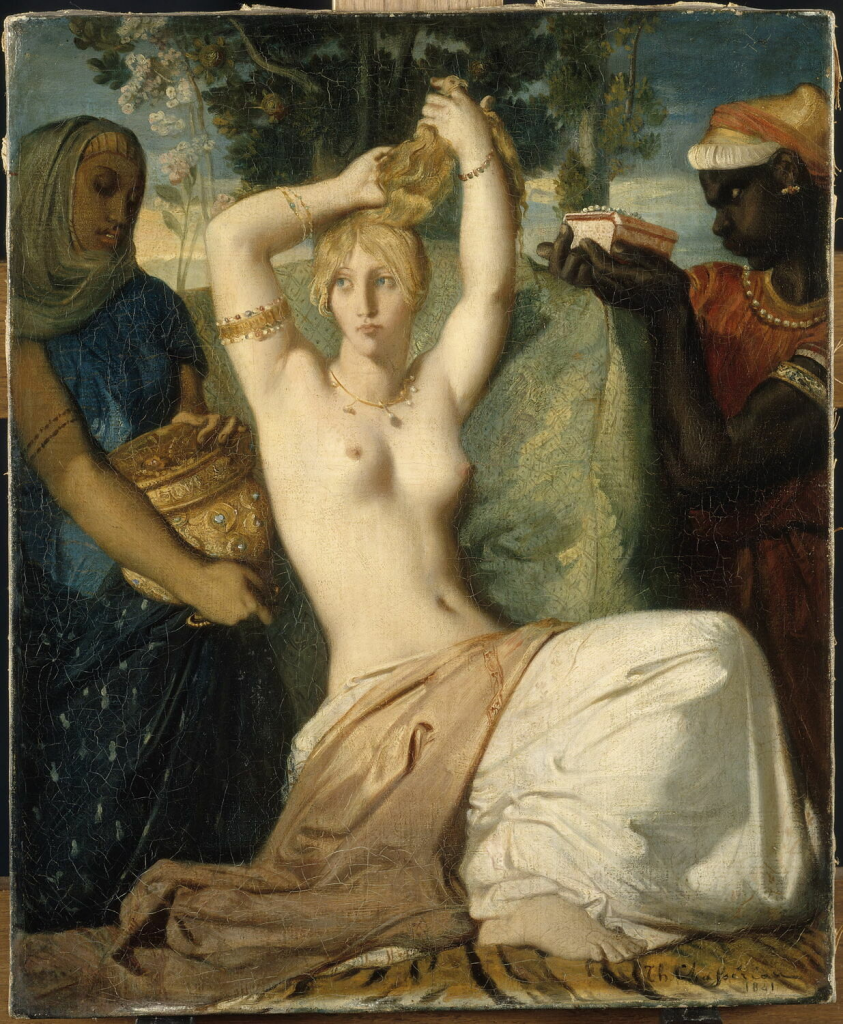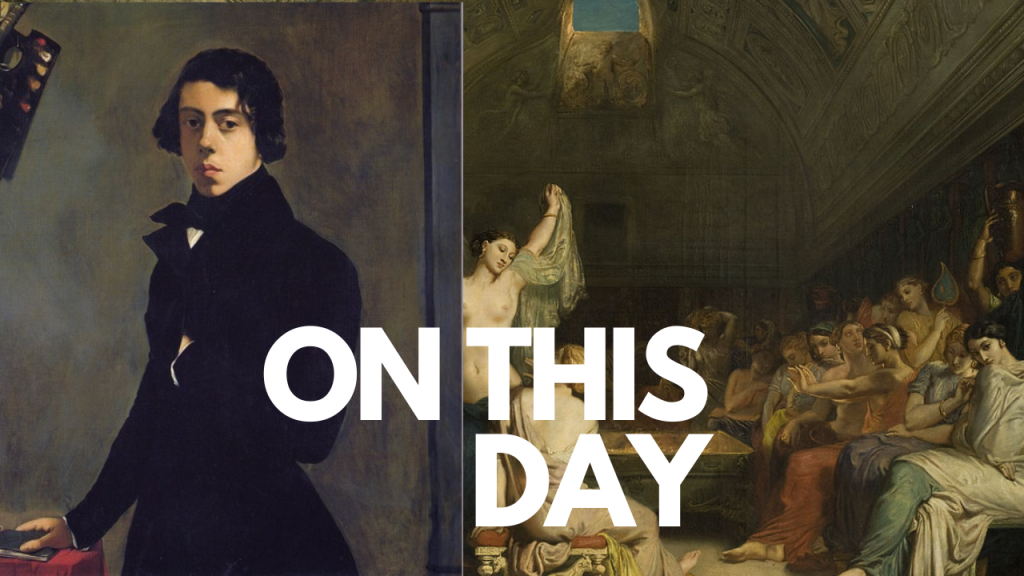Theodore Chasseriau: Precursor of Modern Art in France
On Sept. 20, 1819, Theodore Chassériau is born and became central to the history of French art in the mid-19th century. As an accomplished painter and draftsman, Chassériau created Neoclassical examples that exemplify the art of grace while eschewing the Romantic gusto he would see take over French art in the latter half of the century. Celebrated for his rare blend of classical rigour and romantic ardour, he was truly an outlier in the artistic scene of his era.

The Toilette of Esther, 1841, oil on canvas, Paris, Louvre| Courtesy: wiki
Early Life and Education
Chassériau was born in Santo Domingo (currently the modern Dominican Republic) but moved to Paris when he was fourteen Hundreds became known of his talents as an artist. Then, at the tender age of 11, he worked in the studio of a well-known Neoclassical painter Jean-Auguste-Dominique Ingres. Chassériau was confident of becoming “the Bonaparte of painting”. However, as he grew older, Chassériau slowly moved into a less strict classical tradition following the examples of (for example) the Romantic painting of Eugène Delacroix and far from Ingres in spirit.
Theodore Chassériau: An Artist in Evolution
In the career of Chassériau, one can detect a struggle between Neoclassicism and Romanticism. His paintings like “Venus Anadyomene” and “The Two Sisters”, show a classicist bent that harks back to Ingres. Then he became more easy on the impact but kept to his soft, emotional brushwork and turn out to be quite sensual with his use of colors which were characteristics of Romantic movement. His Orientalist paintings, which were part of the romanticism genre, often depict Arab and North African cultures in rich earth colours but are idealized — not realistic.

Portraiture and Religious Art
Chassériau was also a very successful portraitist. His portraits have a vulnerability to them, and the people in them are often looking for interesting ways, or just listless and depressed. Some of his best known pieces, like “Portrait of the Artist’s Sisters”, demonstrate his ability to get beyond the outer likeness of what he saw, and somehow access a deeper level of feeling from his sittersfrog pose.

Besides portraiture, Chassériau made a great number of works for religious art and painted countless altarpieces at churches in Paris. Wall-paintings at the churches of Saint-Merri and Saint-Roch indicate he was capable of large-scale works spread over many panels which were influenced by classical design as well as a more vigorous Romantic style.

Legacy and Influence
It was not enough for Théodore Chassériau, who would go on to die young at 37 in 1856 but still left an indelible mark on art. He was instrumental in changing those two styles of art, and his works often directly influenced the Symbolist and Orientalist movements. So look at some of his paintings in the Louvre, and you’ll see why he’s hailed as one of France’s most inventive artists of the 19th century.
Conclusion
Theodore Chassériau, born on September 20, 1819 is one of the most prominent figures in the development of French art. He did a lot to reconcile the teachings of gods such as Ingres with the emotional appeal of Romanticism, and helped pay for his debts to many artists who would come after him. And whether through his personal portraits, monumental Christian paintings or sultry Orientalist works, Chassériau still enchants and enlightens viewers today.
Feature Image: A self-portrait of Chassériau painted at the age of 16| Courtesy: Wiki





